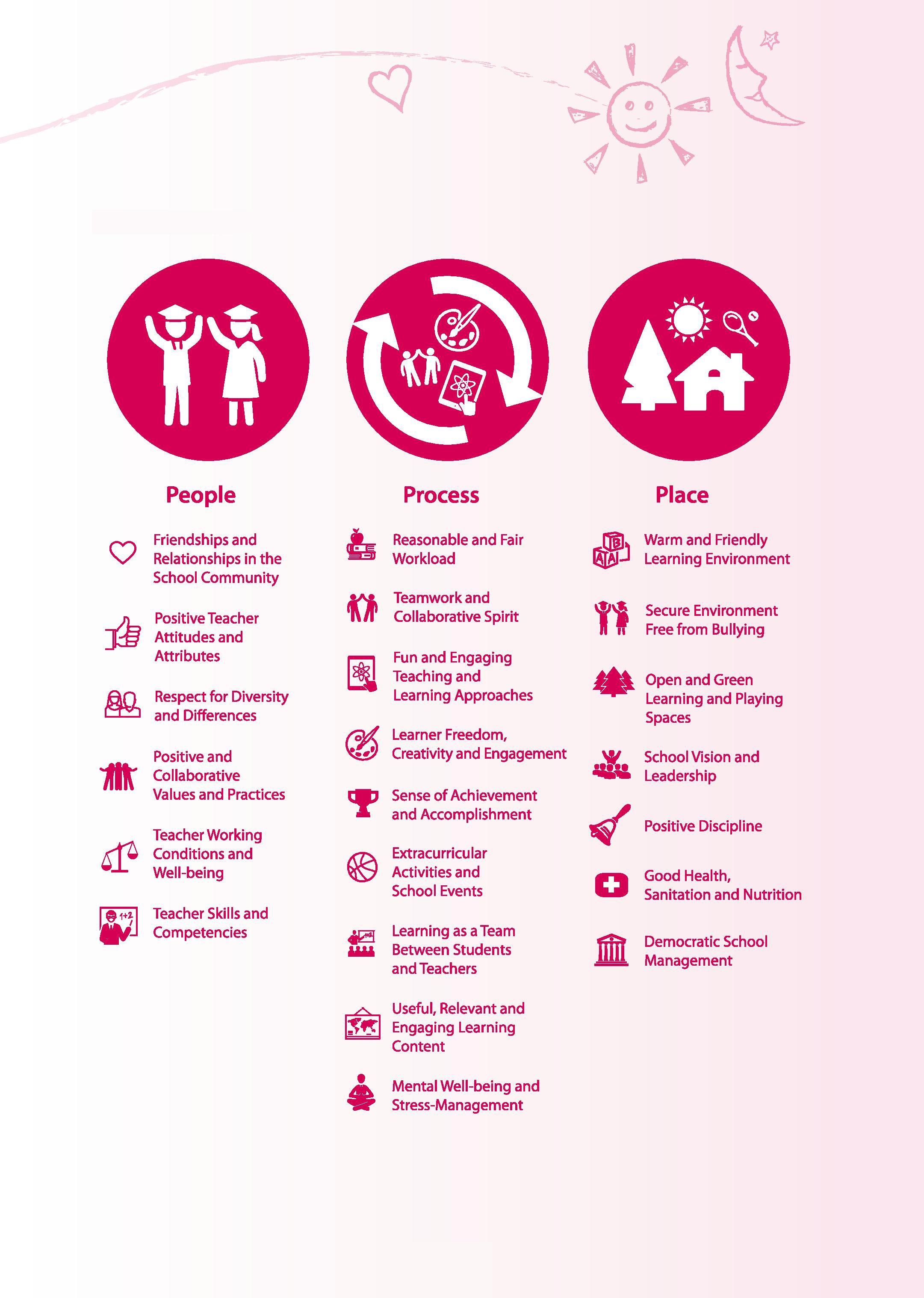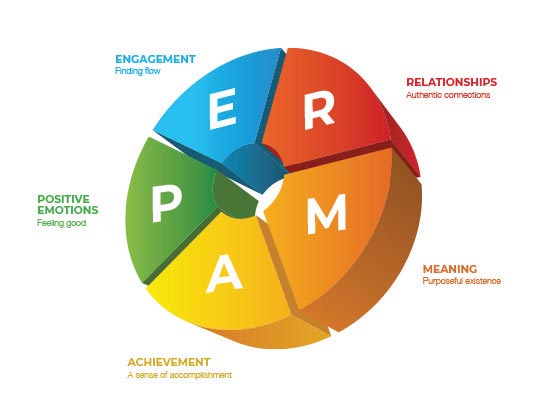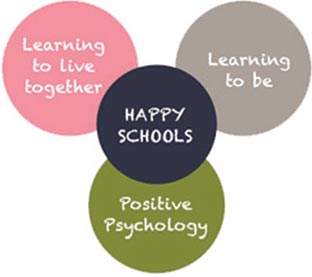
In view of the important relationship between HAPPINESS and THE QUALITY OF EDUCATION, In June 2014 UNESCO BANGKOK Launched “The HAPPY SCHOOLS” Project.
“If you treasure it, measure it. If schools do not measure the well-being of their children but do measure their intellectual development, the latter will always take precedence”
- LAYARD AND HAGELL 2015

UNESCO’S report presents a number of external and internal factors that are undermining learner happiness, which influence the way that we view not only the quality of lifebut also the quality of education.
The results of the Happy School Surveys carried out during the project, provided the basis for identifying the 22 criteria for a happy school under three broad categories: People, Process and Place.

Martin Seligman, one of the founders of positive psychology, developed a five core element of psychological well-being and happiness. Seligman believes that these five elements can help people work towards a life of fulfilment, happiness and meaning.

“Happiness can be defined as being in a positive emotional state or state of positive affect, Whereas, Well-being refers to a value, or what can be considered as good for a person.”
(Haybron, 2013)


The conceptual framework for happy schools stems broadly from UNESCO’s mandate to promote peace through education, and in particular from two of the four pillars of learning: Learning to Live Together and Learning to Be, as well as the field of Positive Psychology.
According to Socrates, happiness is not only the purpose of life, but also something that is ‘obtainable and teachable’ through human effort; in particular through being ‘virtuous’.
(Beebe, 2003)

While Learning to Live Together includes qualities that are essentially based on relationships, including empathy, tolerance, respect for diversity, communication and teamwork (UNESCO, 2014a)

The pillar Learning to Be refers more to qualities that stem from within a person, such as creativity, critical thinking, self-motivation, perseverance and optimism (Faure E. ED., 1972)

The framework also draws on elements of Positive Psychology, for which the core theoretical concept of well-being is ‘PERMA’. (Seligman, 2011).

Confucius had identified social relationships as a source of happiness, and that learning can lead to happiness
(Yao, 2003)
